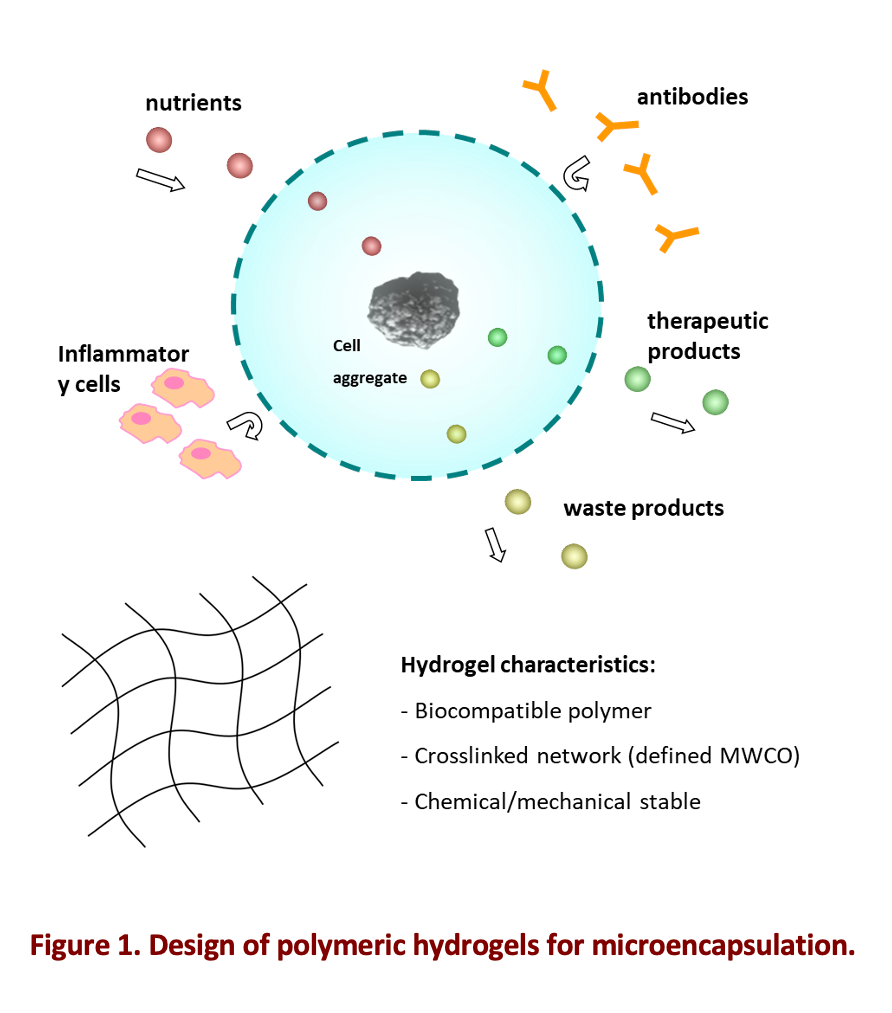Polymer design for cell and drug microencapsulation
Abstract

Microencapsulation has emerged as a powerful technology in biotechnology, medicine, and pharmaceuticals, enabling the protection, controlled release, and targeted delivery of cells and therapeutic agents1-2. The success of microencapsulation depends significantly on the selection and design of polymeric materials, which must provide a delicate balance between biocompatibility, mechanical stability, permeability, and biodegradability. This talk will explore the principles of polymer design for cell and drug microencapsulation, focusing on advanced gelation strategies, novel biomaterials, and applications in drug delivery and cancer therapy.
Calcium alginate is often considered the gold standard for cell microencapsulation due to its biocompatibility, mild gelation, and permeability. However, it faces limitations such as poor mechanical stability, batch-to-batch variability, and susceptibility to gel degradation under physiological conditions, compromising long-term payload protection and immunoisolation2.
One promising approach utilizes biocompatible polyethers such as functionalized Pluronics, which undergo simultaneous thermal and chemical gelation to replicate the behavior of calcium alginate hydrogels2-3. This provides a fully synthetic polymer alternative for cell immobilization and immunoisolation, offering enhanced stability and tunability.
Another microencapsulation strategy replaces alginate with chitosan and β-glycerophosphate (βGP), enabling microparticle production under physiological conditions without the need for acidic solubilization1. This method improves biocompatibility and expands the potential applications of chitosan-based delivery systems.
For drug delivery, a novel multi-level encapsulation strategy integrates polyester microparticles loaded with chemotherapeutic agents within biocompatible, non-adhesive gel microbeads. This design may enhance drug retention while reducing toxicity and inflammation, addressing critical challenges in intraperitoneal chemotherapy for metastatic ovarian cancer.
By combining smart polymer design with advanced fabrication techniques, these approaches may represent significant advancements in cell therapy and drug delivery, paving the way for innovative clinical applications in oncology and drug delivery.

References
-
W. Benamer, F. Cellesi, N. Tirelli J. Microencapsul. 2018, 35, 407.
-
F. Cellesi, F.; Tirelli, N.; Hubbell, J. A. Biomaterials 2004, 25, 5115.
-
G. Camana, M. Tavano, M. Li, F. Castiglione, F. Rossi, F. Cellesi Materials 2023, 16.